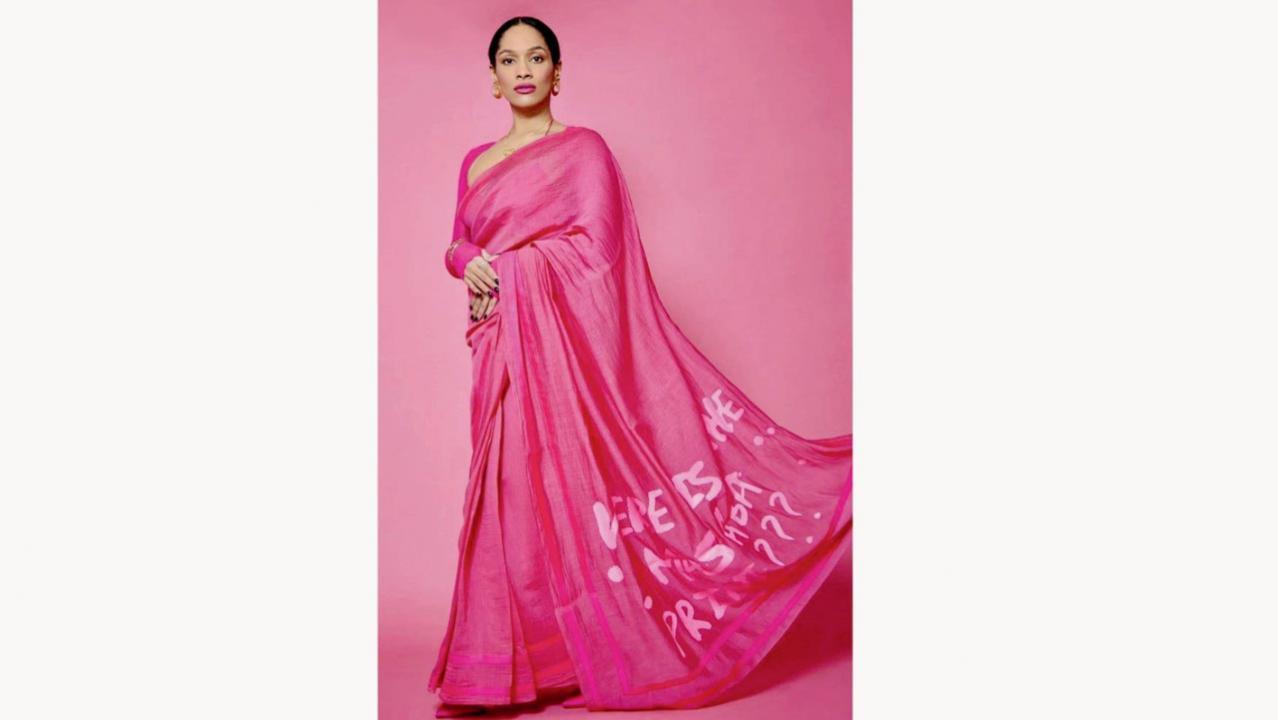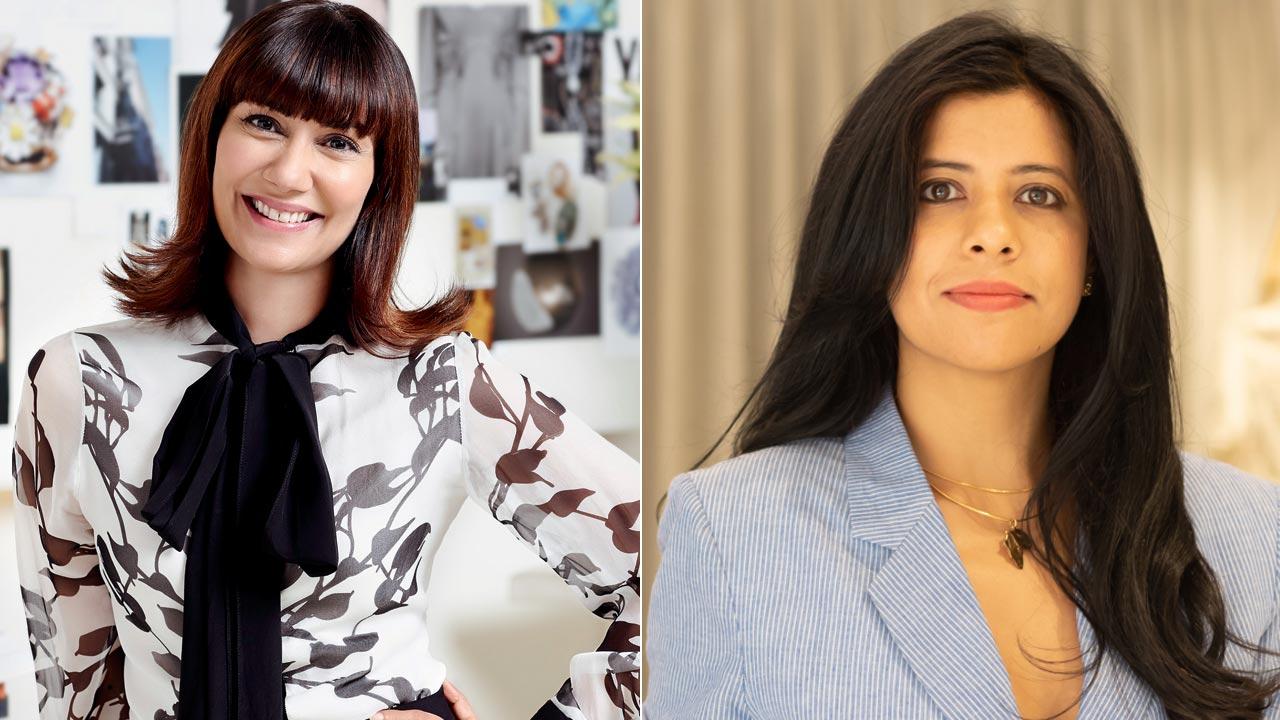Social media is back to “slaying it” in the world’s oldest colour, bright pink, for fast sales — and likes. So, how will you stay on-trend without being a consumerist glutton abusing the environment?

Masaba Gupta. Pic/Instagram
 The next time you are confronted with the perennial dressing dilemma, “What should I wear?”, shift your attention to the relationship between attire and attitude; not just how clothes make you look, but how they make you feel. Because how you feel affects the ability to get stuff done and influence people. Call it fashionable mumbo-jumbo if you will, but researchers Hajo Adam and Adam D. Galinsky coined the term “enclothed cognition” to describe this very systematic influence that clothes exert on the wearer’s psychological processes.
The next time you are confronted with the perennial dressing dilemma, “What should I wear?”, shift your attention to the relationship between attire and attitude; not just how clothes make you look, but how they make you feel. Because how you feel affects the ability to get stuff done and influence people. Call it fashionable mumbo-jumbo if you will, but researchers Hajo Adam and Adam D. Galinsky coined the term “enclothed cognition” to describe this very systematic influence that clothes exert on the wearer’s psychological processes.
If doubt still lingers about the powerful emotional resonance of clothing, we suggest you watch Worn Stories. The Netflix documentary shares impassioned accounts of what different pieces of clothing, in all their nuance, grandeur and humanity, mean to different people.
 Nonita Kalra and Kirti Poonia
Nonita Kalra and Kirti Poonia
But to understand how you want to look and choose from the multiplicity of shapes and colours that offer individual expression within an overall trend or style, first, you must figure out who you are.
Designer-entrepreneur and social media-sweetheart Masaba Gupta posted a picture of herself recently on Instagram. She was at an event and dressed in rani pink or fuschia saree. In an earlier interview to this writer, Gupta had discussed her love for dopamine colours as more elemental than a means of decorating. She said vibrant shades tease memories of her childhood trips to the Caribbean where she’d head to spend time with her father, Viv Richards, and finding herself surrounded by vivid reds, yellows and of course, pink.
The result? The clearly algorithmically-informed Insta post racked up 78,390 likes and with it, attracted a litany of influencers and designers hopping on to Gupta’s #ranicore bandwagon to subvert or reclaim pink. Soon after, fashion boutiques began doling out fuchsia-coloured ensembles available for purchase.
Like it or not, thanks to social sites, the churn of clothing ideas and the high-speed with which these are co-opted as micro or macro trends, is here to stay. Nothing then can be a new thing for too long. “Fashion, more specifically clothing, has long been used in a variety of ways to suit specific needs. Now, it’s a popular choice award [on social media],” observes editor-in-chief at Tata Cliq Luxury, Nonita Kalra.
True, even a colour can be hellishly commodified (consider how Valentino patented PP Pink), but does the fervour remain distinctive to each one of us as an expression of our personality? “Personal style is, well, personal. You either have it or you don’t,” asserts Kalra. You can say that Kalra, former editor-in-chief at Harper’s Bazaar and Elle India, is the original bellwether of style. And she doesn’t mind that social media is defining trends, or the fact that instead of shaping individual sartorial identities, it is making everybody look the same. “I like the democracy of it. The social platforms not only allow young people to find their tribe but also choose their own narrative.”
There are, after all, positives as well as potential drawbacks. It’s the latter that worries her. How this urge for newness and the constant need to fit in, is testimony to the extraordinary way in which we now rapaciously consume fashion. In India, over 1 million tonnes of textiles are thrown away every year, with most of this emerging from household sources, reports the Indian Textile Journal. Textiles make up about 3 per cent weight of the Indian household bin. Textile waste is also the third-largest source of municipal solid waste. “This is the real issue [with social media trends] I think. What’s missing are posts with sophisticated messaging that nudges you to adopt a popular colour by, say, looking inside your existing wardrobe rather than shopping for it.”
Can buying second-hand fashion offer solutions to underutilisation and overproduction? Kirti Poonia, co-founder of Relove, certainly thinks so. “If pink is trending right now, who is to say that you won’t find a pre-loved pink outfit or accessory in your own wardrobe, or at second-hand markets and thrift stores?” she argues.
Founded in 2021, the technology platform helps brands, across multiple apparel categories of men, women and kids, embrace circularity in fashion. The key pillar of Relove is extending the lifespan of products, aided by deploying a resale programme and launching their own digital factory outlet. “Let’s not kill each other [over trends], is the guiding principle and expression of our model,” says Poonia.
Leading resale platform, Thredup, in its Resale Report 2022 predicts second-hand becoming a global phenomenon, expected to be worth $218 billion by 2026, representing a 127 per cent surge in growth.
Now there’s an obvious dichotomy between selling fashion and instructing consumers to buy less, but what platforms like Relove are calling for is
exercising common sense when following trends. “We understand that human nature tends to seek excitement over what’s new. It’s unreasonable to expect a planet of eight billion people to change their purchasing habits or ask them to stop aspiring suddenly. Instead, what if we tell them: ‘By the way, purchasing pre-loved clothing can bring you as much joy as buying something brand-new, and you also end up reducing waste’,” she explains.
This week, Relove received $700,000 in seed funding led by Hearth Ventures with participation from Blume Ventures, and angel investors— Anita Dongre, Aakrit Vaish and Utsav Agarwal. The investment signals pre-loved fashion moving from niche climate change and sustainable supporters to the mainstream. Longevity in clothes isn’t just about garments not falling apart—it’s about wearers not falling off trend.
What to do before your next purchase
. Open the doors of your wardrobe. It’s most likely that the most sustainable garment for the day is one you already own.
. If a total ban on shopping is too big a leap for you to take, try this approach: Before proceeding to buy anything new, do your homework and see if a pre-loved version is available or you can find it at a factory outlet at a deliciously lower price.
. If you can afford to, buy from an ethical brand. Ideally, these brands list details of how and where they have sourced finished goods or/and raw materials and information about their manufacturing processes.
. And if you must buy a new product, make sure you pick up something you know you will wear and will have repeat value for at least the next 10 years.
Courtesy/Kirti Poonia
 Subscribe today by clicking the link and stay updated with the latest news!" Click here!
Subscribe today by clicking the link and stay updated with the latest news!" Click here!










